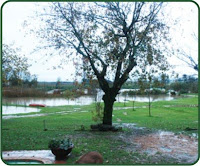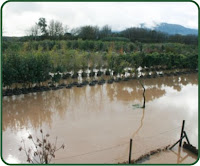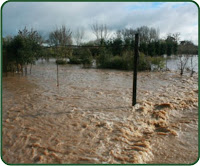Recent rains brought what could have potentially been debilitating floods to the nursery at TreeCo. Although the lush lawn between the tree rows will take some time to recuperate, we are very happy to say that not only have we not lost a single tree, but they are all still looking as incredible as they always do!
Have a look at some of the images from the flood below. We will follow-up with more photos next month to show you how the nursery is recuperating.
Have a look at some of the images from the flood below. We will follow-up with more photos next month to show you how the nursery is recuperating.











